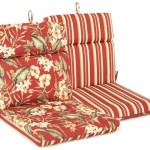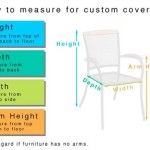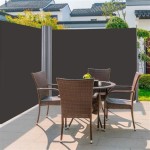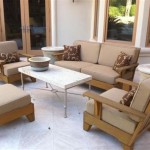What Size Rug for Your Outdoor Patio: A Comprehensive Guide
Selecting the appropriate size rug for an outdoor patio is a critical design decision that impacts the overall aesthetic and functionality of the space. An improperly sized rug can make a patio feel disproportionate, cramped, or unfinished. Conversely, a well-chosen rug can anchor the furniture arrangement, define the seating area, and add visual appeal. This article will provide a comprehensive guide to determining the optimal rug size for various patio scenarios, considering factors such as patio dimensions, furniture placement, and desired aesthetic.
The primary function of an outdoor rug is to unify the patio furniture. It acts as a visual foundation that grounds the seating arrangement and creates a cohesive space. A rug that is too small will appear insignificant and may detract from the overall design. A rug that is too large can overwhelm the patio and make it feel smaller than it actually is. Therefore, understanding the principles of scale and proportion is essential for selecting the correct rug size.
Key Point 1: Measuring Your Patio Space
The first step in determining the appropriate rug size is to accurately measure the patio area. This involves taking precise measurements of the length and width of the space where the rug will be placed. It is imperative to measure the usable area of the patio, rather than the entire patio surface, if other elements such as planters or grilling areas significantly reduce the available space for seating.
Consider the shape of your patio. Rectangular, square, circular, and irregular shapes all require different approaches to rug selection. For rectangular or square patios, a rectangular or square rug that mirrors the shape of the patio is generally a safe choice. For circular patios, a round rug can be particularly effective in echoing the shape of the space. Irregularly shaped patios may require more creativity in rug selection, potentially involving multiple smaller rugs to define different zones or a custom-cut rug to fit the unique shape.
Once the patio dimensions have been established, consider the furniture arrangement. The rug should be large enough to accommodate the major pieces of furniture, such as sofas, chairs, and tables, but should also leave some exposed patio space around the perimeter. This helps to prevent the rug from overwhelming the area and allows for easy movement around the furniture.
A common guideline is to allow at least 12 to 18 inches of exposed patio space around the rug’s perimeter. In smaller patios, this margin can be reduced slightly, but it is important to avoid placing the rug directly against the edges of the patio, as this can create a cramped and unbalanced look.
Key Point 2: Furniture Placement and Rug Coverage Options
The placement of furniture relative to the rug is a crucial aspect of designing a well-balanced outdoor patio. There are several common approaches to furniture placement and rug coverage, each with its own advantages and disadvantages. The best approach depends on the size of the patio, the type of furniture, and the desired aesthetic.
All Legs On: This approach involves placing all legs of the furniture on the rug. This creates a cohesive and unified look, particularly suitable for larger patios where there is ample space. It defines the seating area clearly and provides a comfortable surface underfoot. This option is most effective when the rug is significantly larger than the furniture grouping.
Front Legs On: This approach involves placing only the front legs of the furniture on the rug, while the back legs remain on the patio surface. This is a versatile option that works well in both small and medium-sized patios. It anchors the furniture without requiring an excessively large rug. It creates a sense of connection between the furniture and the surrounding space, while still providing a defined seating area.
Floating Furniture: This approach involves placing all furniture completely off the rug. This can be a suitable option for smaller patios where a large rug would overwhelm the space. Instead, a smaller rug can be used as a decorative accent, placed in the center of the seating area or under a coffee table. This approach can create a more casual and informal look.
It is important to consider the height of the furniture when determining rug placement. A rug that is too thick can cause instability, especially when placed under furniture with short legs. Opt for a rug with a low profile that will not interfere with the stability of the furniture.
In addition to standard seating arrangements, consider other elements on the patio, such as dining tables or outdoor kitchens. For dining tables, the rug should be large enough to accommodate all four legs of the chairs, even when they are pulled out. This provides a comfortable and stable surface for diners and prevents the chairs from catching on the edge of the rug. For outdoor kitchens, a rug can be used to define the cooking area and provide a comfortable surface for standing while preparing food.
Key Point 3: Considering Patio Style and Rug Material
The overall style of the patio and the material of the rug are also important factors to consider when determining the appropriate rug size. The rug should complement the existing décor and enhance the overall aesthetic of the space. Different materials offer varying levels of durability, weather resistance, and visual appeal.
For a modern patio, a rug with a clean, geometric pattern or a solid color can be a good choice. Consider materials like polypropylene or recycled plastic, which are durable, weather-resistant, and easy to clean. A larger rug that anchors the entire seating area can create a sophisticated and minimalist look. Neutral colors such as gray, black, or beige can complement a modern aesthetic and provide a versatile backdrop for other décor elements.
For a bohemian patio, a rug with a vibrant, colorful pattern or a textured weave can add a touch of personality and warmth. Natural materials like jute or sisal can create a relaxed and earthy vibe. Layering multiple smaller rugs can add visual interest and create a cozy and inviting atmosphere. Consider incorporating patterns with global influences, such as Moroccan or Southwestern designs.
For a traditional patio, a rug with a classic pattern, such as a floral or geometric design, can add a touch of elegance and sophistication. Materials like wool or synthetic blends can provide a soft and luxurious feel. A rug that is slightly smaller than the seating area can create a more formal and refined look. Consider using richer colors, such as navy, burgundy, or forest green, to complement a traditional aesthetic.
The rug material should be chosen based on the climate and the level of foot traffic on the patio. Polypropylene and recycled plastic rugs are highly durable and weather-resistant, making them suitable for high-traffic areas and climates with harsh weather conditions. Jute and sisal rugs are more natural and eco-friendly, but they are less durable and may not be suitable for areas with heavy foot traffic or exposure to moisture. Wool rugs are soft and luxurious, but they require more maintenance and are not as resistant to moisture and fading as synthetic materials. Consider the level of upkeep required for each material and choose one that fits your lifestyle and preferences.
In addition to considering the rug material, also consider the rug's thickness. A thicker rug will provide more cushioning and comfort underfoot, but it may also be more difficult to clean and maintain. A thinner rug will be easier to clean and maintain, but it may not provide as much cushioning. Choose a rug thickness that balances comfort and practicality.
Finally, it is important to consider the color and pattern of the rug. The rug should complement the existing décor and enhance the overall aesthetic of the patio. Choose colors and patterns that reflect your personal style and create the desired mood. A lighter colored rug can make a small patio appear larger, while a darker colored rug can add warmth and depth to a larger patio. A patterned rug can add visual interest, while a solid-colored rug can provide a more neutral backdrop.

Your Guide To Outdoor Rug Sizes Authenteak

Shopping For An Outdoor Rug Your Deck Trex Furniture

Your Guide To Outdoor Rug Sizes Authenteak

How To Choose The Best Outdoor Rug For Your Deck Or Patio Jessica Welling Interiors

How To Choose An Outdoor Rug For Your Porch Or Patio Home

Choosing The Right Size Outdoor Rug Caron S Beach House

Home Decorators Collection Aloha Black White 5 Ft X 7 Geometric Contemporary Indoor Outdoor Patio Area Rug 829498

Outdoor Rug Sizing Guide For 8x8 8x10 12x14 16x20 Areas Rugs Direct

Guidelines For Choosing The Right Outdoor Rug

8x10 Water Resistant Large Indoor Outdoor Rugs For Patios Front Door Entry Entryway Deck Porch Balcony Outside Area Rug Patio Aqua
See Also








